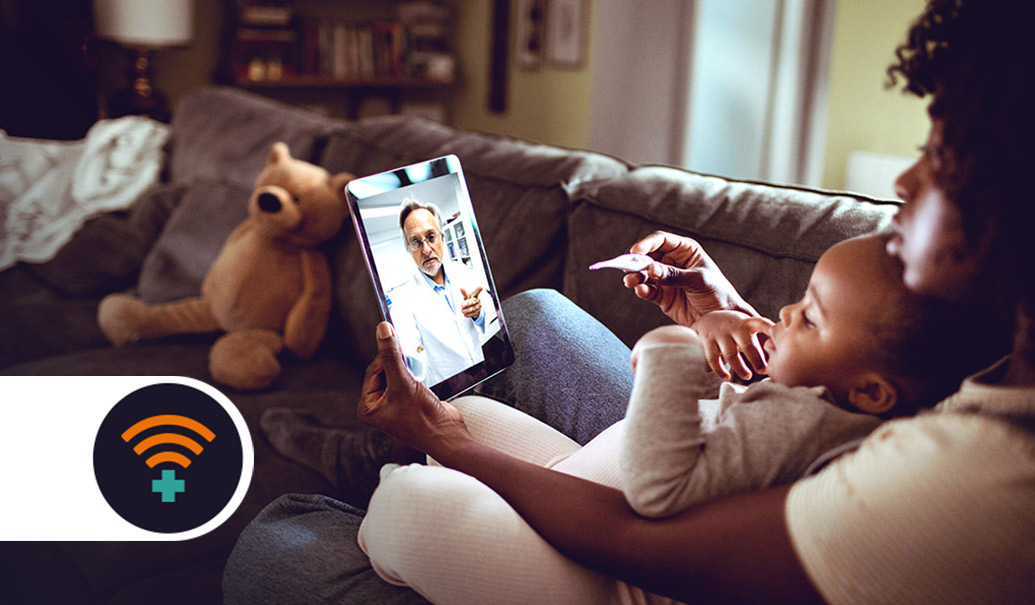As consumers demand more-connected care from the U.S. healthcare system, health plans sit in a unique position at the center of their healthcare journeys—acting as an individual’s link to healthcare providers, sites of care, treatments, wellness programs and more. Their focus on promoting connections between individuals and the healthcare ecosystem naturally empowers health plans with the kind of perspective and experience needed to help solve some of healthcare’s biggest challenges.
The imperative for addressing these challenges is strong—health plans and integrated healthcare organizations must continue to drive new levels of connected care that better align with what consumers want and expect today. Given health plans’ critical role in managing costs and outcomes—especially in the face of 8% forecasted growth in private insurance spending in 2022 and increasing costs of employment—the need is stronger than ever to deliver innovative solutions that contain costs without sacrificing outcomes or consumer experiences. Connected, integrated care is the missing link to achieve that goal.
Health plan intentions vs. consumer realities
Why haven’t the industry’s best intentions translated into a reality for consumers? Despite moves by leading health plans to integrate the healthcare ecosystem through enterprise-level acquisitions, this work isn’t always improving consumer experiences. Many organizations with payer legacies, for example, are repositioning themselves as end-to-end health services organizations with elements of insurance. But these enterprise integrations are not yet delivering whole-person, location-agnostic experiences in which care is connected across digital channels, home, telehealth, primary care, pharmacies and both inpatient and post-acute settings. As health plans aim to deliver these integrated services, they must overcome the status quo in organization design, talent strategy, technology platforms and compliance restrictions, all while maintaining a deep understanding of what consumers desire in their healthcare experiences.
ZS surveyed nearly 4,000 U.S. consumers on this topic and found them feeling frustrated, overwhelmed and disconnected with their most recent healthcare interactions. There is a strong appetite to make healthcare processes simpler, less stressful and more like everyday consumer activities. We heard from those we surveyed that the disconnects in access and navigation and their less-than-ideal experiences in care delivery are leading to a fundamental gap in consumer trust.
The value of connected health to consumers
Though no one in the industry has solved this yet, 84% of these consumers say connected health could be the cure. By aligning and connecting sites of care, the system can better deliver high-value experiences and outcomes. Both the consumers and the more than 200 primary care providers we surveyed overwhelmingly believe connected healthcare will result in better diagnoses, more direct communication between patients and doctors, earlier detection of health issues and improved population health.
Connected health doesn’t equal technology
In the consumer’s mind, connected health goes far beyond technology or digital engagement. It’s about sharing the right information with the right people at the right time to allow for holistic, continuous and seamless care from anywhere. Connection can mean a face-to-face consult with a pharmacist, as much as it does interacting with the latest wearables or digital apps. These interactions are empowered not only by technology, but also an infrastructure built for exchanging health information. Not only do consumers expect their health to be connected, but they also benefit from its ability to support effective prevention and management of disease and efficient utilization of healthcare services.
As health plans look for ways to optimize both cost and quality, connected care is a critical tool to help achieve that aim. Now is the time for health plans to learn from what’s working and what’s not as they leverage their expertise to close the gaps for consumers and regain their trust. We believe they should focus on two major areas:
1. Advancing access and navigation
Lack of access, transparency or easy administration makes navigating the health system confusing, frustrating and inefficient for many consumers. When asked to share their biggest complaint about the current system, many of those we surveyed pointed to access issues such as “how long it takes to get an appointment with my regular doctor” and “it’s too difficult to understand insurance and billing.” Health plans can continue building trust with members, employers and physicians by reducing the complexities surrounding access to care and by further simplifying these experiences.
Health plans can partner with technology-driven companies or build their own offerings to address common consumer pain points through these areas of focus.
Telehealth and hybrid care. While just 23% of health plan members use telehealth, more health plans are making access to care easier by offering it on a virtual-first basis. UnitedHealth, for example, has launched NavigateNOW, a virtual-first health plan designed to provide people with a personalized care telehealth team that includes seamless hand-offs to in-person care.
A consumer’s travel time to access care can affect their health. We saw in our research that those who live further away from a provider tend to avoid care more often. When they do seek care, they are more likely to use virtual resources. People who must travel more than 26 minutes to reach their closest primary care provider use telehealth (37% vs. 19%) and digital health apps (37% vs. 28%) more often than those who live nearby (Figure 1).
Health plans should provide solutions across modalities so that individuals can connect with the right care at the right time, no matter where they are. For example, Blue Shield of California and Walgreens Boots Alliance Inc. partnered to offer locations where members can receive an integrated health experience. Health advisors work alongside clinicians to offer free preventive care and assistance managing chronic conditions to enrolled members both in-store and on the Walgreens Health Corner mobile app.
Appointment scheduling and administration. Though 76% of consumers said they want quick and easy appointment scheduling, only 40% currently use online health portals to schedule their visits, check test results or communicate with doctors. This is consistent across generations, as only 50% of 18–40-year-olds—who we would expect to be more digitally savvy—are using these tools. Health plans can make it easier for people to find and use these digital tools to manage their care. While many communication and administrative tasks sit under provider organizations, health plans need to double down on their role in incenting and enabling increased provider capacity or administrative ease—something that will become especially important for Medicare Advantage plans that are facing quadruple weighting of experience measures in their 2023 Star Ratings.
2. Connecting care delivery
The challenges experienced by consumers in care delivery are not just provider problems. Health plans play a vital role in ensuring care is delivered efficiently and proactively to consumers. In fact, the largest single employer of PCPs in the U.S. is considered an insurer first. We will continue to see convergence among organizations typically classified singularly as “payers” or “providers”—so much so that the terms themselves have already become gross misnomers.
Healthcare provider support. Whether healthcare providers work directly with a health plan or independently, health plans have some work to do to gain their trust. We found that only 51% of physicians stated that they trust health insurance companies compared with 67% of consumers. Health plans must work with providers to ease their administrative burdens and align on fair and equitable reimbursement that promotes preventive care. When asked about their biggest complaint with the healthcare system, providers often cited frustrations with insurance including reimbursement levels, prior authorization requirements and administrative tasks that take time away from patients.
Data sharing and connectivity. While interoperability and data transparency goals are slowly gaining momentum in the industry, there is still a long way to go in delivering this vision. Health plans can take the lead in helping providers expand this infrastructure that is critical to the viability of connected health and to health equity.
Nearly eight out of 10 healthcare consumers want their providers to have access to their medical history. A full 89% of patients feel that easier access to their medical records in one place would improve health outcomes. Interestingly, self-identified Medicare Advantage members who also report they are in poor health are more likely to be willing to share various types of personal health data. This presents an opportunity to effectively manage acute and chronic health conditions through remote monitoring devices and other digital interventions.
There is opportunity to positively affect members of employer-based plans by better connecting their health data, as they are already using connected health tools: 35% of employer-based plan members use or have a wearable health monitoring device. And of those members, 75% are comfortable sharing this data with providers (see Figure 2). They also use online health portals at a higher rate than the overall population we surveyed (44% vs. 40%).
How health plans can strengthen consumer trust and confidence
Clearly, the potential exists for health plans to bridge these gaps. When it comes to consumer trust, health plans have a narrow lead over some other industry players, such as medtech and pharma companies. Compared to the 96% of consumers who say they really or somewhat trust doctors, however, health plans still have a lot of ground to make up, earning the trust of 69% (see Figure 3). By addressing the challenges that consumers and healthcare providers experience daily, health plans can begin to expand upon consumers’ moderate levels of trust.
While building a more-connected healthcare system, health plans should keep these principles in mind:
- Solve challenges for specific populations and health conditions: By building for someone and not everyone, health plans can focus on the unique suite of digital and brick-and-mortar connectivity to drive value for consumers. In one example, an ecosystem player is investing to meet consumer needs in oncology. From the foundation of care delivery and pharmacy, this organization is wrapping integrated yet compliant programs and support offerings around the consumer to meet needs across their therapy journey. Trust needs to be built at the individual level, especially for challenging diseases like cancer, and can be achieved through these types of customized interventions. This focused approach opens the door for integrated health organizations to bring solutions to market that are more likely to succeed.
- Connect silos and build new capabilities: Health plans have work ahead of them to deliver on this vision of connected care. They need to shift organizational and talent strategy from business-unit-oriented KPIs to incentives that reward collaboration. It’s important that there are enough “boundary spanners” on the team to help the organization think and work across historical silos. Health plans also will need to reshape their processes to allocate investments and develop technology infrastructure to enable a cross-functional strategy with data aggregation and insights. Health plans should not be afraid to start with early experience efforts (not pilots) and activate trust gradually through incremental wins for specific segments. In doing so, it is important to build the measurement capabilities to understand the impact of connected programs and continually advance this vision.
- Build partnerships: Health plans can operate as an aggregation platform, helping connect both physicians and members to the resources they need through the most effective modality. Health plans can bring collaborations to the table that add value to the health system through partnerships, as opposed to creating duplicative programs. For example, partnerships such as Omada Health and Evernorth offer integrated technology and services to consumers. They also may consider partnerships with historically competitive stakeholders, such as provider and plan collaborations, or specialty pharmacies enabling—rather than competing—with health system in-house dispensing pharmacies.
Embrace the role of health plans as ecosystem facilitator
We believe that health plans can take the lead as ecosystem facilitators to deliver connected care, though they need to continue to invest in new capabilities to get there. Scalable technology infrastructure must be in place to enable data connectivity, aggregation and insights. A modernized talent strategy with updated performance incentives and measurement are critical to shift behaviors of individual stakeholders and business units to drive connections. As each of these transformations begin to fall into place, health plans can assume their role as the ecosystem facilitator that we all need to help drive integrated, whole-person care.
Interested in hearing more about how health plans can lead the industry to truly connected healthcare? Listen to our on-demand webinar.
Add insights to your inbox
We’ll send you content you’ll want to read – and put to use.














